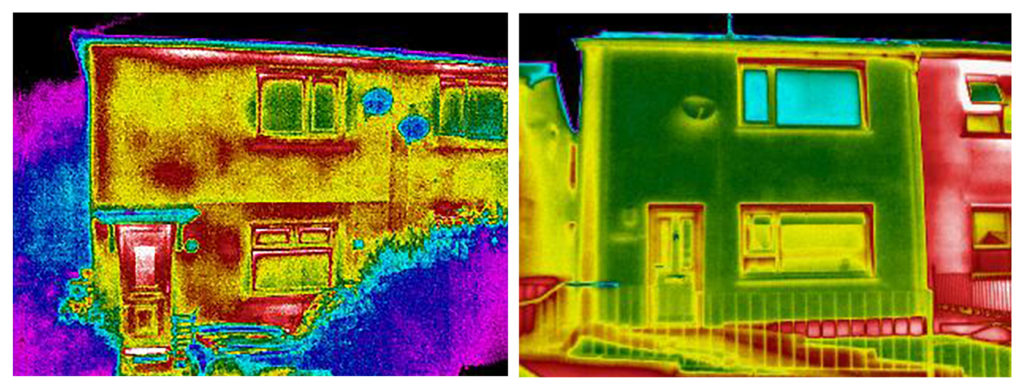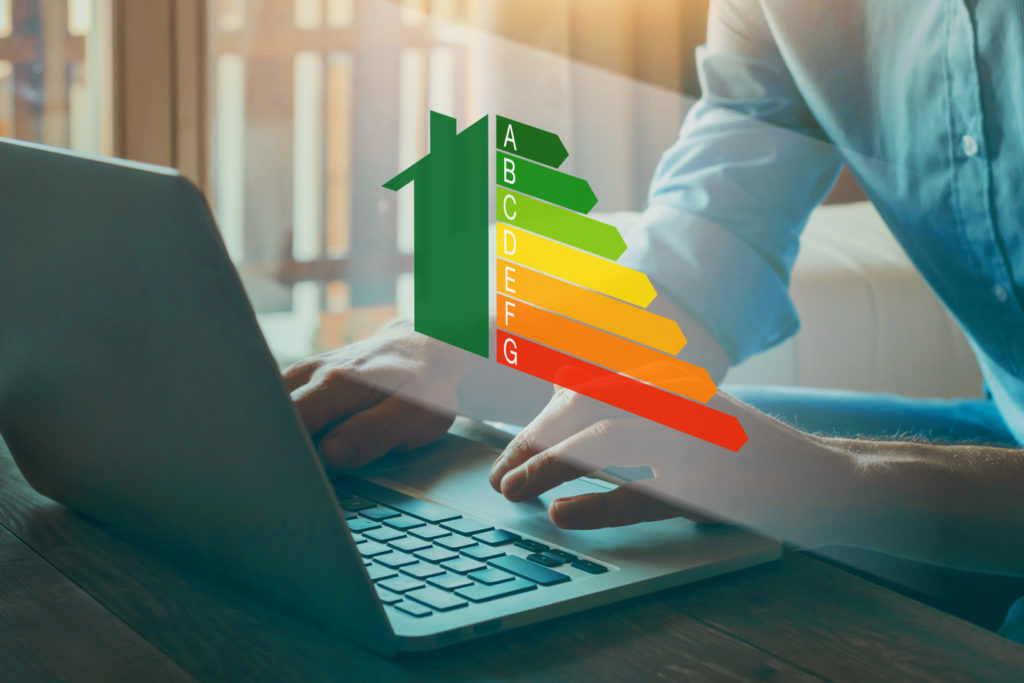UK social housing providers are facing their biggest challenge yet. Not only are decarbonisation deadlines looming, but also thousands of residents are in desperate need of protection from rising fuel costs. Stewart Little, CEO of IRT Surveys, explains how a retrofit ecosystem achieves affordable warmth that pays for itself.
Government initiatives have put local authorities and social housing providers at the vanguard of energy efficiency improvements. The Clean Growth Strategy requires all rented properties to have a minimum Energy Performance Certificate (EPC) rating of C by 2035, or 2030 for fuel poor homes. This is a huge task, with recent data from the Department of Business, Energy, and Industrial Strategy showing that 39% of social homes have an EPC rating of D or below.*
Undertaking such improvements is increasingly urgent. Over the past few months, household energy bills have soared. The price cap, which used to protect residents from exorbitant costs, has increased by 54% since October 2021. While retrofits have long represented a way of reducing carbon emissions and energy bills at scale, lack of access to efficient project funding is proving to be a sticking point.
An ecosystem approach
Although private funding does exist for retrofit projects, it often comes with prohibitive conditions, overpriced premiums, and insufficient capacity. This is because retrofits are frequently seen as a shot in the dark. And unsurprisingly, housing providers and funders are hesitant to commit the billions needed to uncertain and mistrusted projects. But joining the dots between each stage of the retrofit planning cycle bridges this knowledge gap. Called an ecosystem approach, such a collaborative methodology unlocks the ability to forecast retrofits’ carbon savings, quantify the likelihood these savings will materialise, and understand projects’ financial viability.

Data-driven decisions
Data is the lifeblood of an ecosystem approach. It cuts across every stage of the retrofit journey, empowering decisions that optimise property selection, residents’ savings, project financeability, emission reductions, likelihood of success, and insurance criteria. And the first step for housing providers, insurers, funders, and residents is to gain an objective view of homes’ current conditions.
One of the most effective ways to create a building baseline is to use thermal imaging surveys. Not only do these measure areas of energy loss in a building without human bias but can detect previously undiscovered issues, such as missing insulation, porous brickwork, and draughts. When combined with archetypal open data sources, housing providers can enjoy an accurate insight into their buildings’ energy usage and energy waste. These insights can
then be aggregated and analysed to suggest viable decarbonisation measures, along with the expected outcomes.
Bridging outcome uncertainty But predicting carbon and energy savings are all very well on paper but the reality can be different. Historical misalignment between technology-led outputs versus the savings delivered has held funders back, hindering retrofit ambitious. This is where risk quantification comes in. By utilising advanced AI algorithms that combine thermal imaging outputs, open data sources, Building Information Modelling (BIM), and insurance criteria, the likelihood of project underperformance can be understood.
Risk quantification allows stakeholders to have a realistic understanding of expected carbon reductions, energy savings, and Return on Investment (ROI). And because risk is evaluated on a sliding scale, retrofit measures can be tweaked to mitigate the likelihood and magnitude of underperformance.
Plugging the funding gap
Decarbonising the UK’s four million social homes by 2050 is set to have a price tag of £104bn. As such, ensuring project financial viability is of the utmost importance. Retrofits need to be viewed as financial assets to gain institutional funders’ support — and to access to large liquidity pools at a higher loan-to-cost ratio.
Key advantages of an ecosystem approach are that retrofits’ energy savings and financial implications can be predicted and as a result, guaranteed. Such security provides third party, ESG funders with the confidence needed to front the required capex. The realised energy bill savings then repay the initial capex costs, enabling a ‘pay-as-you-save model’. And up to 25% of these savings are left with residents from day one — putting money back in tenants’ pockets.
Insurance policies that guarantee energy savings not only support access to ESG funding but also off-balance sheet treatment. As a result, existing budgets can be leveraged multiple times, reducing fuel poverty and improving lives for residents at scale. Such an approach offers a financially, socially, and environmentally sustainable way to reach net zero for budget-stretched and balance-sheet constrained local authorities and housing associations.
 A no regrets solution
A no regrets solution
An ecosystem approach supports projects that tackle the most energy inefficient homes first. By prioritising properties in order of need, retrofits can improve the lives of those in fuel poverty first — saving them money while delivering warmer, more pleasant homes.
Typically, retrofits include improving buildings’ ability to keep in heat alongside installing renewable generation assets. In these cases, housing providers and residents often enjoy fast payback times as well as high energy and carbon reductions, with 100% of the bill savings left with residents once the initial capex has been repaid. This equates to resident savings of £900.00 – £1,200.00 at the current price cap — offering a no-regrets solution that will still be delivering value 30 years down the line.
Joining the dots
An example of how this multi-faceted approach works in practice can be seen in the partnership between technology companies IRT Surveys and Tallarna. Their collaboration provides a turnkey solution for social housing providers, empowering them to identify, design, insure, fund, and contract viable retrofit projects in one place.
Social housing providers have a legal duty of care towards both residents and the planet, with urgent action required to meet Britain’s 2035 EPC C deadline. Leveraging an ecosystem approach to retrofits will not only prevent millions from choosing between heating and eating but will make a tangible impact on mitigating the climate crisis. The way ahead is clear. Social housing providers have it within their power to pave a better environmental, social, and financial future for all — they just need to take the first step.
Header image: One of the most effective ways to create a building baseline is to use thermal imaging surveys.









